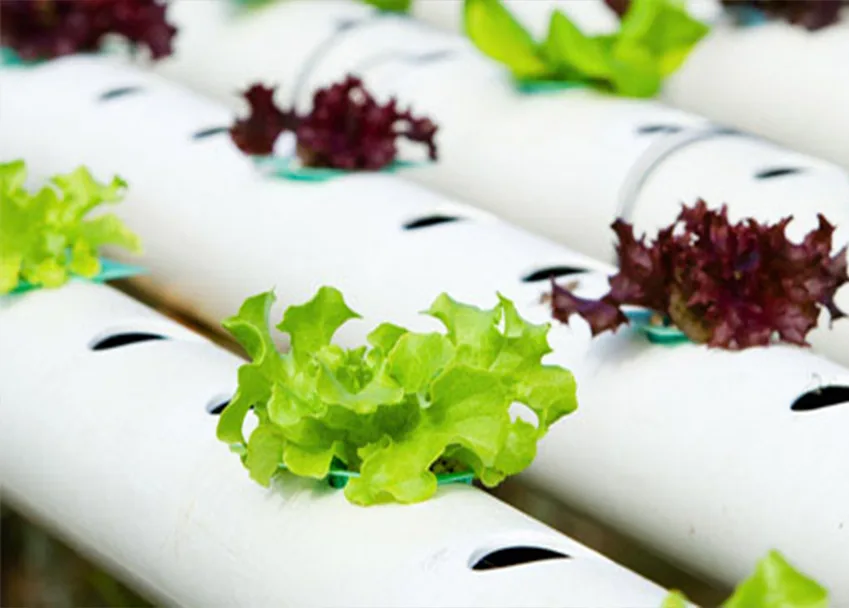Grow hydroponically at home!
A great beginner’s course for those wanting to learn about hydroponics. Designed specifically for those wanting to use hydroponics at home. Learn the theory behind hydroponic culture and how to get started and set up your own practical hydroponic system.
Course Aims:
- Describe the nature and scope of hydroponic growing in a hobby situation.
- Explain basic plant nutrition chemistry in order to describe the composition and function of hydroponic nutrients.
- Differentiate between a variety of fertilisers and hydroponic nutrients, and suggest how these might be used appropriately in the growing of different types of plants in a hydroponic garden.
- Compare options for media and systems, in order to choose what is appropriate to a specific home situation.
- Design a hydroponic system suited to a particular home situation
- Diagnose common ailments in a hydroponic system, make a determine appropriate action.
- Describe the course of a hydroponic crop in a home situation from initial planting to harvest, and treatment of the harvested crop.
- Differentiate between solid media and nutrient film hydroponic techniques, and the way in which plants may be treated differently in each.
- Plan the production of a sequence of vegetable and herb produce for household use from hydroponic production.
- Determine appropriate methods for hydroponic cut flower production in a home situation.
There are 10 lessons in this course:
- Introduction to Hydroponics & Plant Growth
- Scope and Nature of Hydroponics and terminology (Water Culture, Sand and Gravel Culture, Rockwool, Vermiculaponics, Hydroculture, etc)
- How it Works
- A Simple Manual System to Create
- History of Hydroponics
- Understanding How Plants Grow
- Understanding the Water Requirements and Management
- Photosynthesis
- Basic Chemistry, Nutrition & Nutrient Solutions
- Significance of understanding chemistry for hydroponics
- Understanding Basic Chemistry
- Atoms and Compounds
- The important Plant Nutrients
- Writing Chemical Names
- What concentrations of different nutrients does a plant need?
- Nutrient solutions
- Preparing Nutrient Solutions
- Mechanisms of Nutrient Uptake
- More on Nutrient Solutions
- Understanding differences between Soil Culture and Soil less Culture
- The nitrogen Cycle
- Mycorrhizae
- Summary of fertilizers used in Hydroponic Nutrients
- Calculating Chemical Formulae
- Hydroponic Nutrition
- Media and Types of Systems
- Classification of Hydroponic Systems
- What Makes up a System; system variables; Solution Dispensation, Closed or open, Drip, slop, capillary feed, wicks, misting, dry fertilizing etc, Automatic or Manual Operation, Type of Medium, Construction Materials, Rate & Frequency of Irrigation & Feeding, Air Injection (In water culture), Plant Support, Environment controls.
- Choosing a System
- Types of Media
- Rockwool
- Vermiculite
- Sand
- Leca, (Expanded Clay)
- The Bentley System
- Designing a System
- Nutrient Film Technique
- Alternative NFT Layouts
- Solution Dispensation Options (closed or open system, drip, slop, flood, capillary, dry, mist, etc)
- 16 Other System Options
- Problems in Hydroponics
- Pest and Disease
- Nutrition
- Environmental
- Diagnosis of Nutritional Problems
- Controlling Acidity
- Plant Culture
- Flow Charting a Crop
- Greenhouse Management
- Controllers (Salinity, pH)
- Adjusting Solutions using an Electro Conductivity Meter
- Solid Media vs Water Culture
- Indoor Plants
- Berries
- Gravel Culture compared with NFT
- Growing Vegetables in Hydroponics
- Fresh Cut Herbs in Hydroponics
- Lettuce
- Tomatoes
- Cucumber
- Review of all other common vegetables that are suited to hydroponics
- Growing Cut Flowers in Hydroponics
- Overview
- Roses
- Chrysanthemums
- Carnations
- Review of many other common flowers that are suited to hydroponics
Each lesson culminates in an assignment which is submitted to the school, marked by the school’s tutors and returned to you with any relevant suggestions, comments, and if necessary, extra reading.

